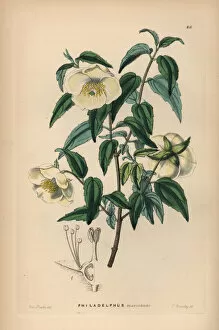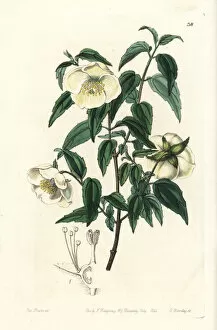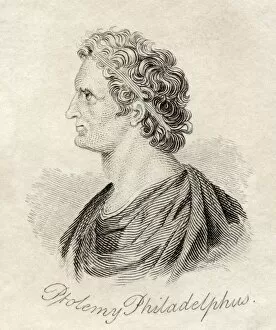Philadelphus Collection
"Discover the Beauty of Philadelphus: From Mock-Orange to Egyptian Royalty" Plate 76 showcases the enchanting Mock-orange, also known as Philadelphus Belle Etoile
All Professionally Made to Order for Quick Shipping
"Discover the Beauty of Philadelphus: From Mock-Orange to Egyptian Royalty" Plate 76 showcases the enchanting Mock-orange, also known as Philadelphus Belle Etoile. With its delicate white blooms and sweet fragrance, this Mexican syringa or mock orange, Philadelphus mexicanus, adds a touch of elegance to any garden. As we delve into history, we find that even ancient civilizations were captivated by the allure of Philadelphus. Coins and medals from the Egyptian Ptolemaic dynasty depict its beauty alongside their rulers' faces. The Sweet mock-orange, English dogwood or Philadelphus coronarius is another variety that has captured hearts throughout time. Its creamy blossoms exude a heavenly scent reminiscent of springtime bliss. Let us not forget about the Mexican mock orange, Philadelphus mexicanus. This vibrant species brings a burst of color to gardens with its radiant yellow flowers and lush green foliage. Intriguingly enough, ancient manuscripts like the Gottorfer Codex feature illustrations showcasing Syringa persica, philadelphus coronarius and syringa vulgaris – an ode to these beloved plants' timeless appeal. Travel back in time through stunning photographs capturing architectural wonders such as the Colonnade at Philae Temple in Egypt. These grand structures stand tall against centuries past while intertwining with nature's own masterpiece - our beloved Philadelphus blooms. Even cameos have immortalized King Ptolemy II of Egypt and his wife Arsinoe I from the 3rd century BC. The intricate details etched into these precious gems pay homage to their reign while subtly incorporating elements like our cherished flower -Philadelphus. Ptolemy Philadelphus himself ruled over Ptolemaic Egypt from 309-246 BC; his name forever linked with this captivating plant.


























